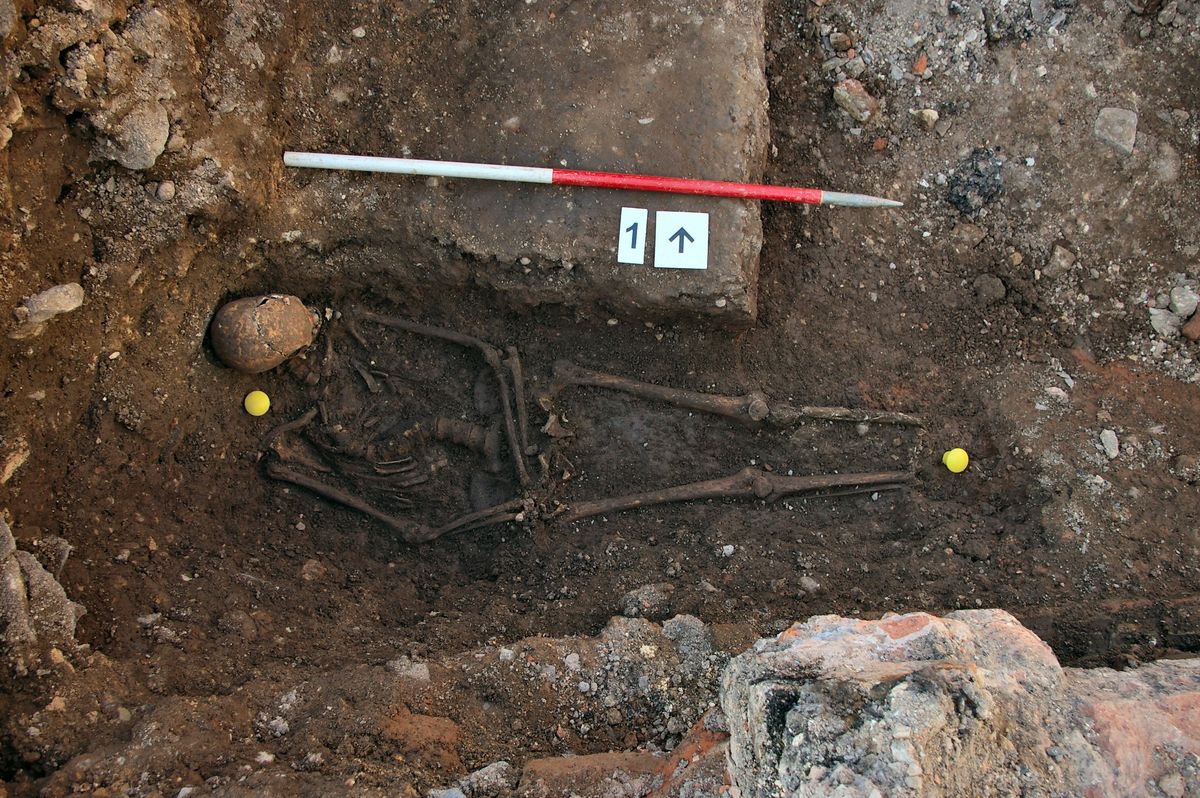King Richard III's Hasty Grave Opened to the Public

The public can now visit the original, hastily dug grave of King Richard III of England.
The monarch's skeleton no longer inhabits the grave, which sits in a city council parking lot in Leicester, England. The body of Richard III, which was found in the parking lot in August 2012 and removed for study, will be reburied in Leicester Cathedral next year.
On Saturday (July 26), however, the King Richard III Visitor Center opened at the site of the king's first grave.
"We are looking forward to welcoming people from Leicester, and from all over the world, to learn more about the dramatic story of the king's life, his brutal death at Bosworth Battlefield and the compelling story of his rediscovery," visitor center director Iain Gordon said in a statement. [Gallery: In Search of the Grave of Richard III]
Discovering Richard III
The spot became Richard's resting place after his death at the Battle of Bosworth Field in 1485. After his death in battle, the king was taken to Leicester and buried at a Franciscan monastery known as Grey Friars church. A marker once graced the grave, but time gradually swallowed the site: The church was demolished around 1538, and the land it stood on was subdivided and sold off in the 1700s.
Screenwriter and Richard III enthusiast Philippa Langley spearheaded the search for Richard III. Historical documents suggested the Grey Friars site might be under a city council building parking lot in Leicester. An archeological investigation led by the University of Leicester Archaeological Service dug into the lot. Within days, the team began to turn up window frames, walkway tiles and the floor of Grey Friars Church — complete with graves.
Sign up for the Live Science daily newsletter now
Get the world’s most fascinating discoveries delivered straight to your inbox.
Most of the graves were neat, deep and squared-off, but one was an exception. This grave had sloping sides and was too small for the skeleton within, which had to be twisted and propped up to fit into the hole.
That skeleton? Richard III.
A monarch's grave
After anatomical and DNA study confirmed the skeleton's identity, the Leicester team announced the discovery of the king's body in February 2013. They reported that the skeleton showed signs of battle injuries, including two fatal blows to the back of the head and several post-mortem wounds inflicted on the king's corpse, likely as a way to humiliate him after death.
The new visitor's center does not dwell only on the king's death and ignominious burial. Displays tell the story of Richard's rise to power during the War of the Roses, a bitter civil war between dynasties. They also tell of Richard III's death and how his defeat ushered in the Tudor dynasty. Finally, the center provides a walk through the search for Richard III's body and the science used to identify the bones as the king's.
Visitors can view a three-dimensional replica of the king's bones, and visit the gravesite itself, "preserved in a quiet, respectful setting" according to the Leicester City Council. The city expects to welcome 100,000 visitors to the center in the next year.
Follow Stephanie Pappas on Twitter and Google+. Follow us @livescience, Facebook & Google+. Original article on Live Science.

Stephanie Pappas is a contributing writer for Live Science, covering topics ranging from geoscience to archaeology to the human brain and behavior. She was previously a senior writer for Live Science but is now a freelancer based in Denver, Colorado, and regularly contributes to Scientific American and The Monitor, the monthly magazine of the American Psychological Association. Stephanie received a bachelor's degree in psychology from the University of South Carolina and a graduate certificate in science communication from the University of California, Santa Cruz.











